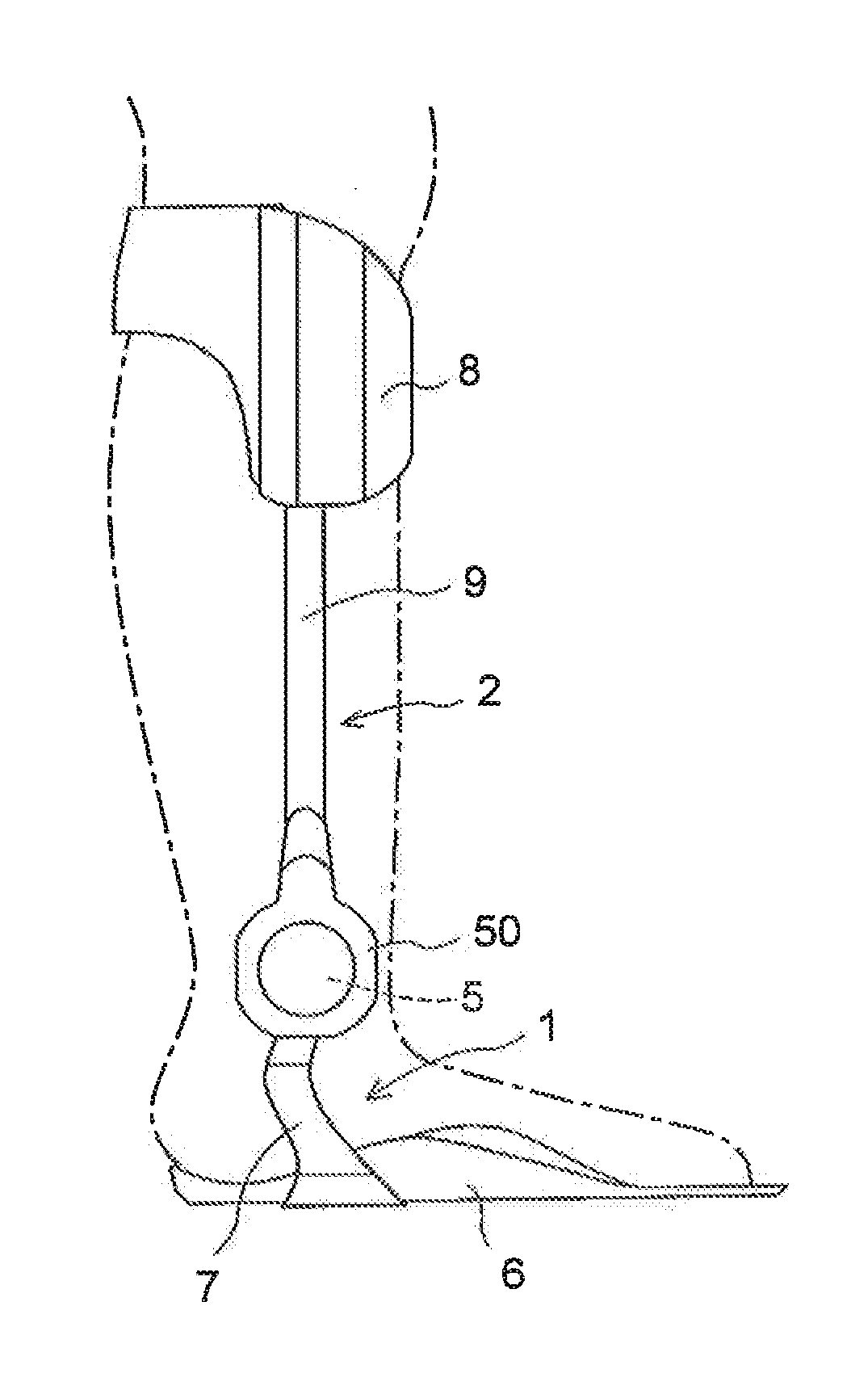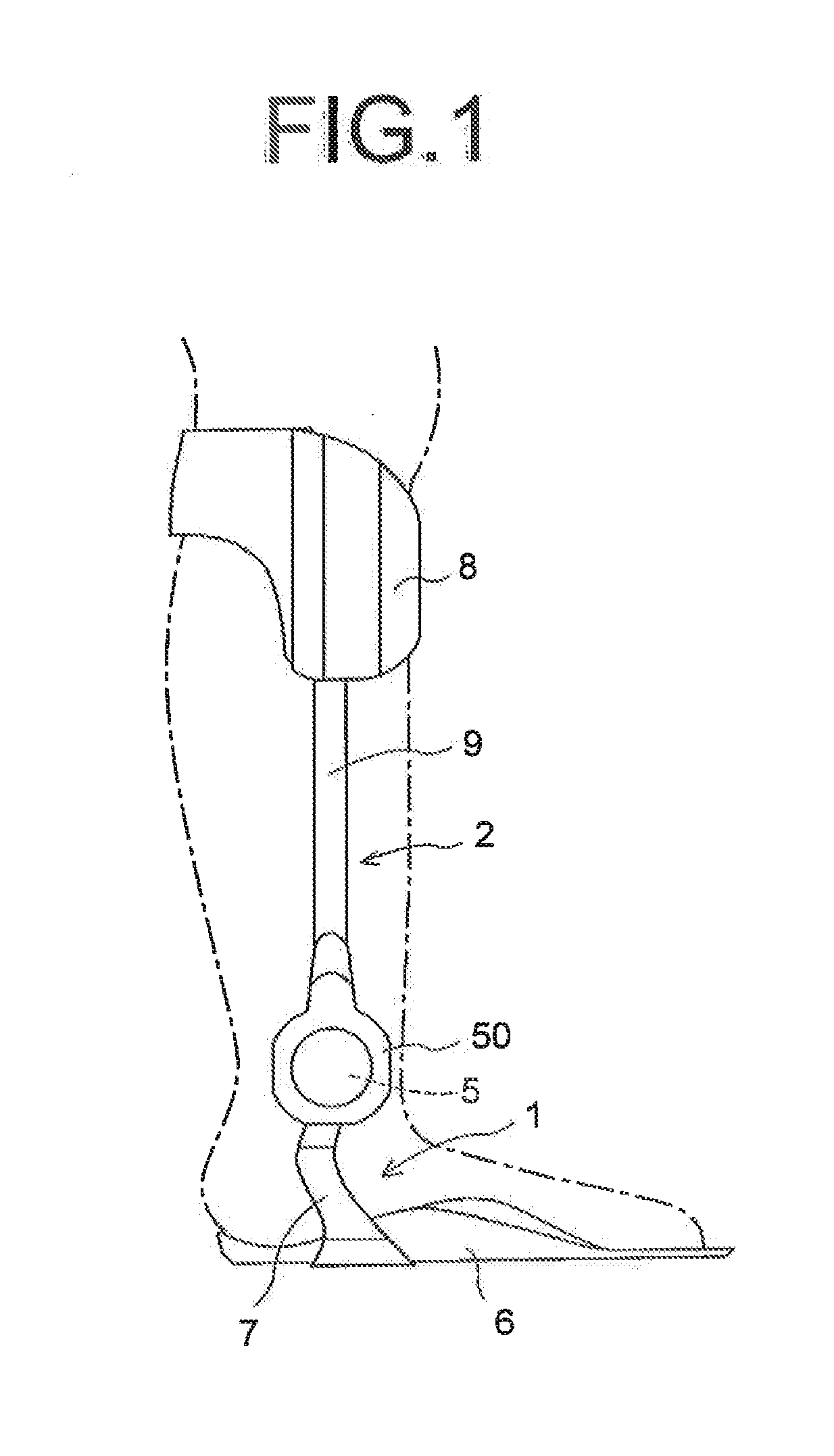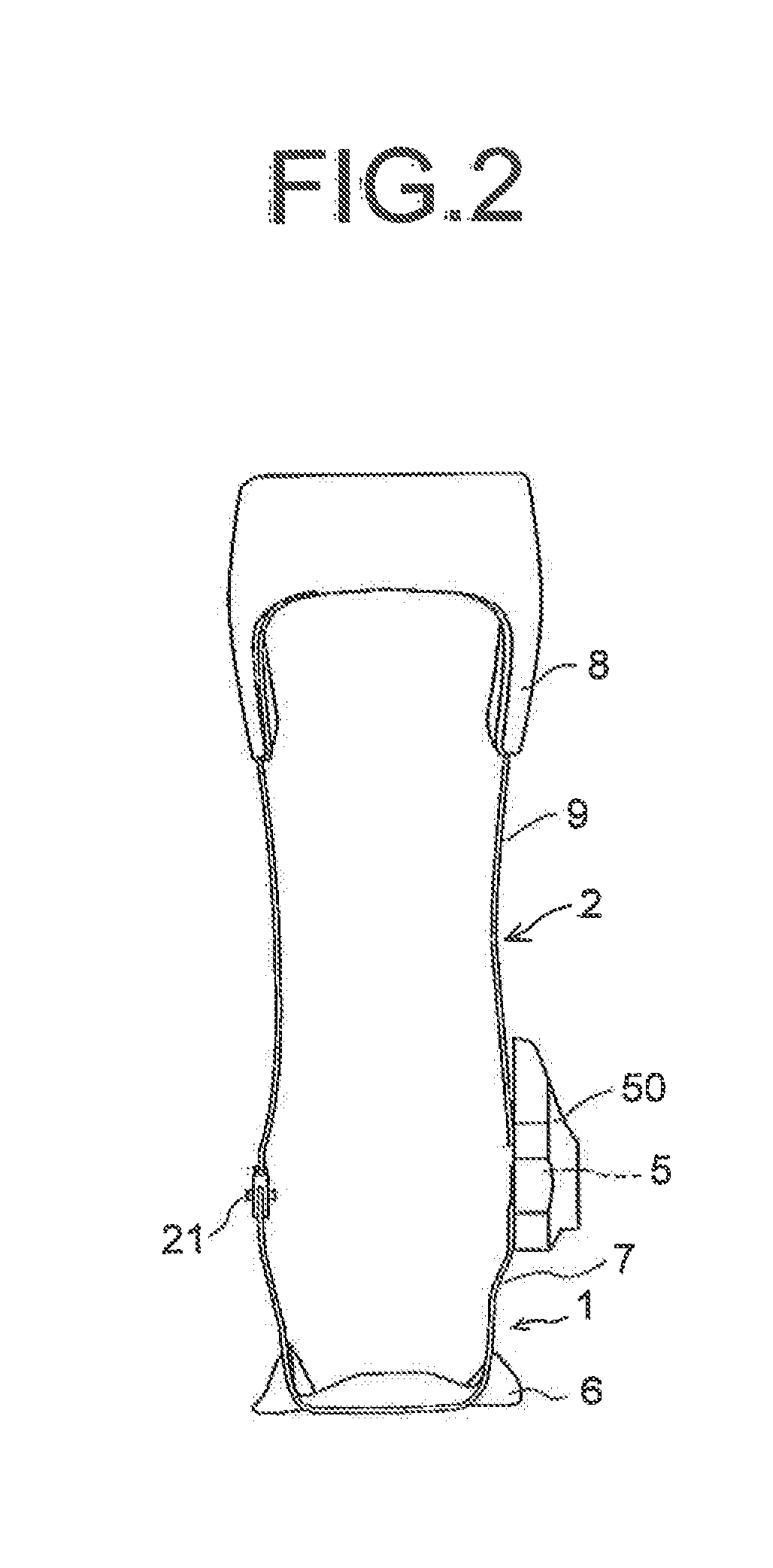Lower-limb joint orthosis and control method therefor
a technology for low-limb joints and orthotics, applied in the field of low-limb joint orthosis, can solve the problems of not being provided, unable to bend and stretch the ankle, and difficult or impossible to walk independently, so as to increase the sensitivities, reduce the size, and increase the output
- Summary
- Abstract
- Description
- Claims
- Application Information
AI Technical Summary
Benefits of technology
Problems solved by technology
Method used
Image
Examples
Embodiment Construction
[0026]With reference to the drawings, a description is given below of embodiments of the present invention. FIG. 1 is a side view of a lower-limb joint orthosis provided with an ankle-joint function according to a first embodiment of the present invention; FIG. 2 is a rear view thereof; FIG. 3 is a vertical cross-sectional view of an orthotic joint included in the lower-limb joint orthosis; FIG. 4 is a right side view thereof; FIG. 5 is a left side view thereof; and FIG. 6 is a horizontal cross-sectional view thereof.
[0027]In the lower-limb joint orthosis (hereinafter also referred to simply as an “orthosis”) according to the present embodiment, an MR fluid cylinder is a rotary cylinder. The lower-limb joint orthosis includes a lower component 1, an upper component 2, and an orthotic joint 5 that couples the lower component 1 and the upper component 2 together. The lower component 1 is capable of supporting the sole mounted thereon; the upper component 2 is to be attached to the low...
PUM
 Login to View More
Login to View More Abstract
Description
Claims
Application Information
 Login to View More
Login to View More - R&D
- Intellectual Property
- Life Sciences
- Materials
- Tech Scout
- Unparalleled Data Quality
- Higher Quality Content
- 60% Fewer Hallucinations
Browse by: Latest US Patents, China's latest patents, Technical Efficacy Thesaurus, Application Domain, Technology Topic, Popular Technical Reports.
© 2025 PatSnap. All rights reserved.Legal|Privacy policy|Modern Slavery Act Transparency Statement|Sitemap|About US| Contact US: help@patsnap.com



